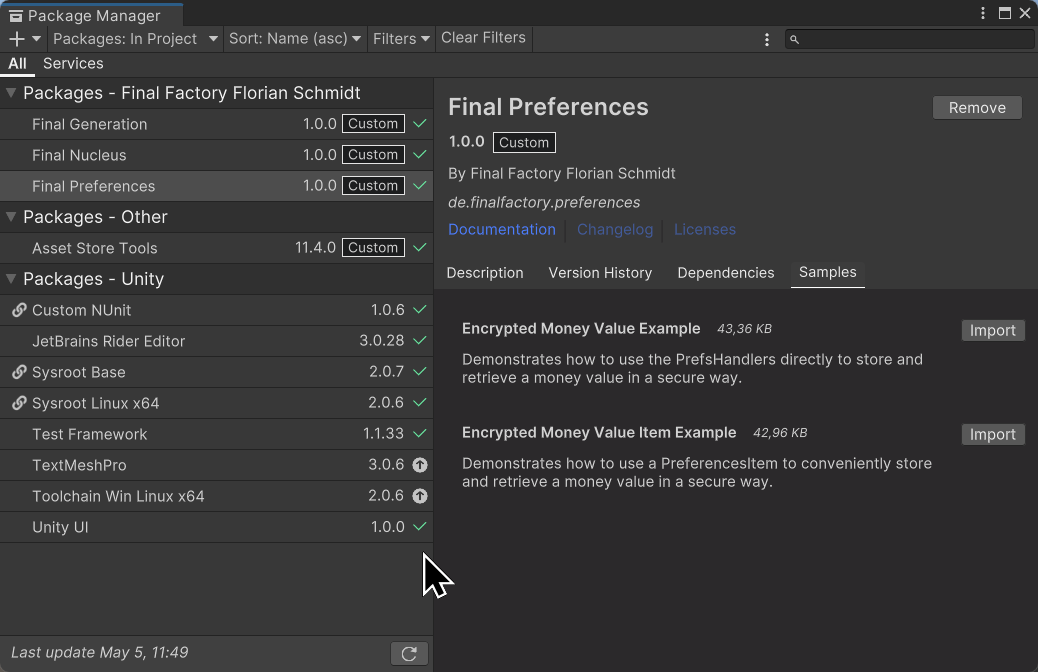Samples
You can find the samples for Final Pool in the Unity Package Manager. Simply navigate to the Final Pool section and look under the 'Samples' category to access and explore various sample implementations and configurations.

(Sample Picture)
Cannon Sample
The Cannon Sample provides everything you need to understand how Final Pool works and how to implement object pooling in your project.

How to Use
After importing the sample through the Package Manager, follow these steps:
- Navigate to
Assets\Samples\Final Pool\1.0.0\Cannons\Scenes. - Open the
SampleScene. - Press Play and observe the initial "bad" performance in the Unity Profiler.
- In the Hierarchy, select the Manager GameObject.
- Enable the toggle in the Sample Manager to activate pooling.
Now, the scene will use Final Pool to optimize object management and improve performance.
Setup
This sample includes two prefabs:
-
Simple Prefab:
- This prefab generates dust on impact.
- The particle system's Stop Action is set to "Disabled".
- A script is attached to return the object to the pool when it is disabled.
-
Complex Prefab:
- This prefab also generates dust but has more complex behavior.
- It includes a script that resets the Rigidbody's state upon despawn, handles collision events, and implements the
IPooledObjectinterface to manage custom behavior during object pooling operations. This ensures that the object is properly reset and ready for reuse when returned to the pool.
Process
In the sample, the cannon continuously spawns and shoots bullets. When a bullet hits an object, it is "destroyed" and spawns a dust particle. The dust particle is then destroyed once the particle system completes.
Poolify the Process
By enabling the Pool setting in the Sample Manager located in the scene hierarchy, the bullets and dust particles will be pooled instead of being created and destroyed. This demonstrates how Final Pool optimizes object reuse and improves performance in high-frequency object creation scenarios.